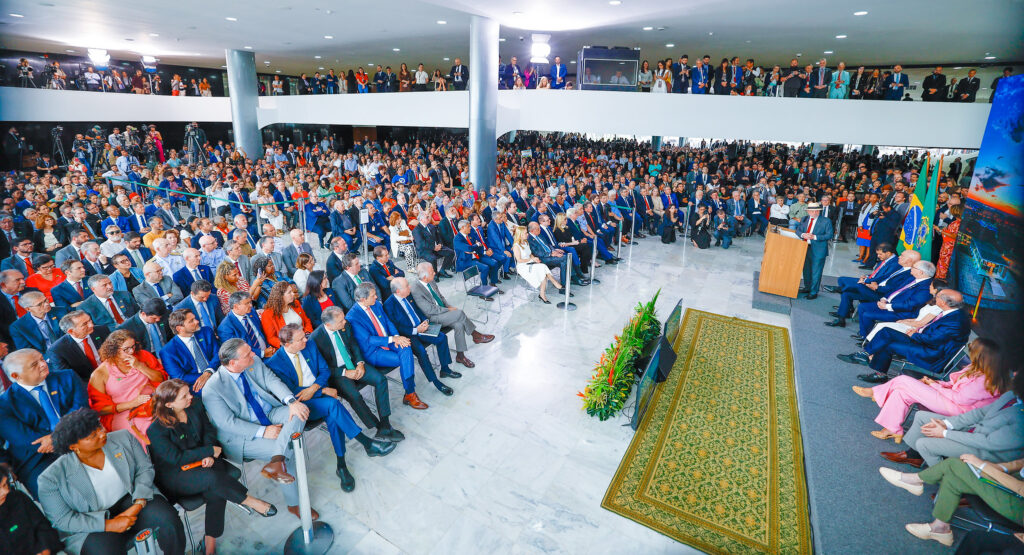The American Association of Jurists (AAJ) has filed a formal complaint with Argentina’s Supreme Court, after two plaques marking the “Room of Human Rights” were removed from the country’s Palace of Justice in Buenos Aires.
The “Room of Human Rights” referred to the courtroom in which the Trial of the Juntas took place between April 22, 1985 and August 14, 1985, during which nine military leaders were tried for their role in the abusive dictatorship which governed the country between 1976 and 1983.
Prior to their removal, the plaques had been located on either side of door 2045 on the ground floor of the Palace of Justice since 2014. One of them, on the right hand side of the door, was inscribed with “Room of Human Rights,” while the other, on the left hand side, was dedicated to the work of the Inter-American Commission on Human Rights (IACHR).
In a letter to Horacio Rosatti, the president of Argentina’s Supreme Court, the AAJ asked for an explanation of “the reason or circumstance for which [the plaques] have been removed,” adding that they were using their “right to access public information granted to us in accordance with the provisions of National Law number 27.275.”
The letter continued to highlight the room’s “importance in the fight against impunity” and the reminder it serves of “the need to investigate the truth and punish crimes against humanity.”
Cristina Caamaño, a member of the AAJ and rector of the National University of the Plaza de Mayo Mothers, told Página 12: “Around October, we became aware of the missing plaques, through the people who pass daily through that door.”
She accused the government of being “denialist” and “trying to sweep away the policies of Memory, Truth, and Justice,” adding that the plaques commemorate what is remembered as the “Never Again Trial.”
Caamaño also claimed, “They are trying to remove everything that might remind us of the worst dictatorship our country had, which was the last civil-ecclesiastical-military dictatorship.”
Approximately 30,000 Argentinians are estimated to have been “disappeared” during the dictatorship. Many bodies are still missing. Victims of the regime were frequently drugged and thrown from aeroplanes into the sea, while some victims’ bodies are thought to have been destroyed with dynamite, and others are believed to have been buried in unmarked mass graves.
The Trial of the Juntas sought to bring those who had led the campaign of state-perpetrated violence to justice. The defendants were Jorge Rafael Videla, Emilio Eduardo Massera, Orlando Ramón Agosti, Roberto Eduardo Viola, Armando Lambruschini, Omar Domingo Rubens Graffigna, Leopoldo Fortunato Galtieri, Jorge Isaac Anaya, and Basilio Lami Dozo.
By the end of the trial, which took 530 hours and saw 839 witnesses testify, five of the nine defendants were convicted.

Jorge Rafael Videla and Emilio Massera were sentenced to life imprisonment; Orlando Ramón Agosti was sentenced to four years and six months in prison; Roberto Eduardo Viola was sentenced to 17 years in prison; and Armando Lambruschini was sentenced to eight years in prison. Meanwhile, Omar Rubens Graffigna, Basilio Lami Dozo, Leopoldo Galtieri, and Jorge Anaya were acquitted.
Since President Javier Milei’s inauguration in December 2023, his government has closed various sites dedicated to memorializing the dictatorship.
One of these is the Haroldo Conti Cultural Memory Center, a cultural center opened in 2004 with a focus on human rights. The center was previously home to ESMA, a former clandestine detention center based in the Navy Mechanics School. News of the center’s closure was announced on December 31, and the center was shut down on January 2, according to Página 12.
A joint statement by multiple human rights organizations read: “Historical research, the production of evidence and information that feed judicial processes and the path to truth, the work with witnesses and victims, litigation as an executive power in cases of crimes against humanity, the transmission of memory, and reparation policies in compliance with national legislation, are affected, and, in some cases, can no longer be carried out.”
Milei’s government has also closed the “memory space” established in the former clandestine detention center, Virrey Cevallos, in Buenos Aires. According to La Ciudad, Raúl Ricardo del Valle, an employee of the center who was laid off shortly before the new year, said, “We do not want to give in and we want to continue transmitting what happened during the dictatorship.” He expressed a desire to share “the reality” which he and other “memory site workers” are experiencing under the current government.
The post Plaques commemorating military junta trials removed from Argentina’s Supreme Court appeared first on Argentina Reports.
The post Plaques commemorating military junta trials removed from Argentina’s Supreme Court appeared first on Latin America Reports.



